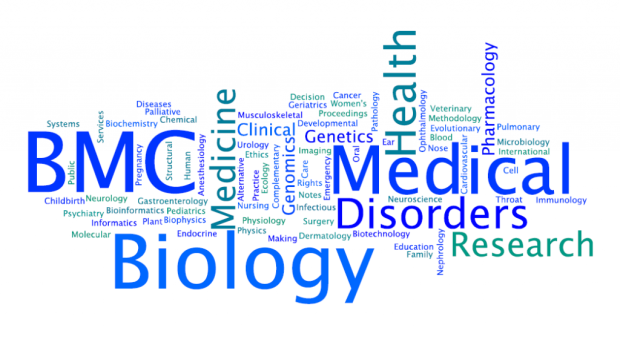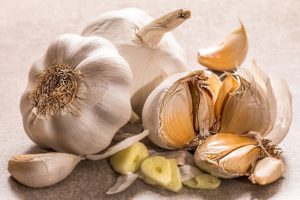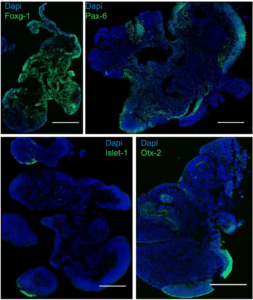
BMC Anesthesiology: Organ transplantation in the modern era
To mark the launch of the new Anesthesia and Perioperative Care for Solid Organ Transplantation section in BMC Anesthesiology, the section editors have written an editorial describing the history and role of anesthesiology in organ transplantation. They discuss the many advancements in anesthesia that have contributed to successful organ transplantation, as well as the current challenges that exist when performing transplantations of specific organs. As the Section Editors Drs. Saner and Bezinover note, the field of transplant anesthesia is underrepresented in major anesthesia conferences and journals. With this new section, they hope to attract high-quality studies that continue to shed light on this important area of anesthesia research.
BMC Biomedical Engineering: Battling adhesions: from understanding to prevention
Adhesions, scar tissue that can lead to organs or tissues sticking to each other, are common occurrences after surgery, especially abdominal surgery. While they often do not cause injury to patients, they can sometimes cause pain or lead to further complications. As common as adhesions are, developing effective preventative measures has remained a challenge. In this review, Capella-Monsonís et al. provide an overview of the molecular pathways involved in adhesion formation and the latest advances in the approaches used to limit them. Methods for preventing adhesions include surgical procedures, mechanical barriers, antiadhesive agents, and physical therapy. Although numerous products and procedures have been developed, further research is still needed to design new therapies and improve the efficacy and safety of existing ones.
BMC Chemical Engineering: Energy and CO2 management for chemical and related industries: issues, opportunities and challenges

Overabundance of carbon dioxide (CO2) in the atmosphere is a key driver of climate change and there is an urgent need to reduce current levels of emissions. This review by Vooradi et al., published in one of our newest journals, BMC Chemical Engineering, explores the opportunities and challenges facing chemical and related industries in managing CO2 emissions and energy consumption. These industries are highly energy-intensive and currently consume most of their energy from non-renewable sources — namely fossil fuels — whose industries also contribute to CO2 emissions. The authors write that one of the major challenges is shifting away from fossil fuels to renewable energy while still meeting global demand for the products of chemical industries. They suggest that when approaching these issues, industry should consider a strategy implementing multiple changes with the aim of increasing process efficiency, including adopting carbon capture and storage technologies. It may sound like a daunting task to meet the Paris Agreement’s goal of limiting the global temperature increase by 1.5 °C by the start of the next century, but understanding how chemical industries can respond is essential to help meet this goal.
BMC Cancer: The garlic compound ajoene covalently binds vimentin, disrupts the vimentin network and exerts anti-metastatic activity in cancer cells

Garlic has long been used for its health benefits and numerous compounds derived from the popular Allium plant have been studied for their therapeutic properties. One of these compounds, an organosulfur compound called ajoene (from “ajo”, Spanish for garlic), has been shown to fight fungal infections and may help prevent cancer and cardiovascular disease. In cancer cells, ajoene acts on multiple targets, but few specific targets have been identified. In this study, Kaschula et al. revealed that one of ajoene’s targets is the protein vimentin, a structural protein that is overexpressed in some cancers and contributes to increased tumor invasiveness.
They found that overexpressing vimentin in cancer cells boosted migration, but exposure to ajoene completely blocked this effect. The authors suggest that ajoene binds to vimentin at a specific cysteine residue, preventing vimentin from forming functional filaments, thus dampening its pro-migratory activity. Interestingly, they also showed that ajoene increases vimentin expression in cancer cells, indicating that ajoene stops filament formation even as new vimentin is produced.
BMC Family Practice: Dissonant views – GPs’ and parents’ perspectives on antibiotic prescribing for young children with respiratory tract infections
Misuse of antibiotics has propelled the emergence of antibiotic-resistant bacteria, a growing public health issue. Antibiotics are often prescribed to treat respiratory infections like the common cold, but they are not always effective, especially if the infection is caused by a virus. High rates of antibiotic prescribing have been observed in Australia, the UK, and other countries, and can be caused by a number of factors. In this study, Biezen and colleagues interviewed general practitioners (GPs) and parents of young children to see where their views on prescribing antibiotics aligned and where they diverged.
While some of the GPs expressed a perceived lack of understanding by the parents regarding appropriate antibiotic usage, most of the parents had a good understanding of when antibiotics should be used, and their visit to the doctor was primarily for reassurance that their child would recover. Some GPs felt that explaining why antibiotics would not be appropriate or would take too long, and it would be easier to give the patient a prescription if the parent asks for one. Many parents however, said that they trust their GPs’ advice and would want to have these discussions with their GP during the visits. Ultimately, both groups wanted better communication when it came to managing a child’s illness.
BMC Developmental Biology: Computational fluid dynamic analysis of physical forces playing a role in brain organoid cultures in two different multiplex platforms

Organoids — miniature, three-dimensional versions of an organ — have recently emerged as a promising tool for studying how different organs function, as well as their disease states. The process of making organoids uses stem cells that have been coaxed to assemble into complex three-dimensional structures, given the right growth environment. In this methodology article by Goto-Silva et al., researchers studied two common methods for generating cerebral organoids and proposed an optimized protocol for reliably producing functional “miniature brains.”
An important step in both of the studied protocols is agitating a suspension of stem cells, which affects the mixing of nutrients and the level of shear stress the cells are exposed to. However, these two methods perform this by using either an orbital shaker or a 3D-printed spinning device called the SpinΩ. By testing different conditions and performing computational fluid dynamics analysis, the authors determined that using a standard orbital shaker with their suggested alterations would be both accessible and effective. They also found that after 30 days of cultivation, their organoids produced markers of different regions of the brain, indicating that the stem cells had matured into a range of cell types found in the brain. This suggests that their method could be used for developing models for studying discrete regions of the brain and processes that affect them, and more accurately than was possible before.
Comments